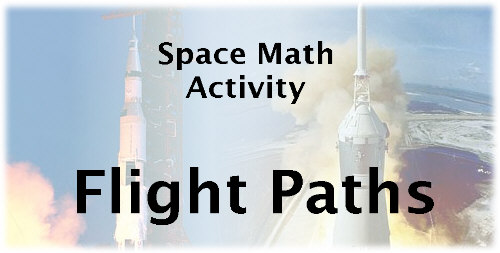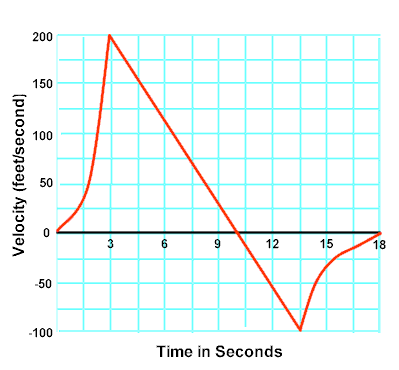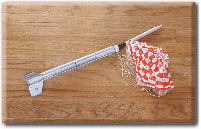 |
Activity: to obtain an intuitive understanding of the flight path and velocity of a model rocket, and to apply that understanding to graphical representations.
Mathematical Skills: grade level 7-12, graphical interpretation, concept of velocity.
Materials: It is possible to utilize this activity for its on-paper mathematical application only. It is recommended, however, that the actual rocket launching component of the activity not be omitted. Due to the complexities involved with launching model rockets, several options of varying difficulty levels are suggested.
Rocket Launching Options:
|
|
Launch a model rocket with a popping parachute. A student, a fellow staff member, or a parent hobbyist may be willing to demonstrate a launch for the class . |
|
|
|
|
Have the class build
a rocket from a 35 mm film canister, heavy paper and cellophane
tape. The rocket will be propelled by effervescing antacid
tablets and water. A complete description of this process,
including drawings and discussion questions can be found at the NASA
site |
|
|
Have the class construct small flying rockets out of paper and propel them by blowing air through a straw. A complete description of this process, including drawings and discussion questions can be found at the NASA site Paper Rockets. |
Rocket Principles: Prior to the rocket launching, briefly discuss with the class the history of rockets and/or the principles of rocket propulsion. Discussions appropriate for secondary level students can be found at the NASA sites Rocket Principles and Rocket History.
Directions:
|
|
Briefly discuss the history of rockets and the principles of rocket propulsion with the class. |
|
|
Decide upon the rocket launching option. Obtain the necessary materials and secure permission for the launch (if school protocol deems it necessary). |
|
|
If students are building their own rockets, encourage experimentation with the size of the rocket, the weight of the rocket, the amount of "fuel" used for the flight, etc. |
|
|
After the flight, form groups of students to discuss questions such as "What was observed from the flight?", "What could have been done to build a better rocket?" and "What criteria would be used to define a 'better' rocket?" A written report may be compiled. |
|
|
Have students study the graph shown below. Working together have students answer the questions below the graph. After answers have been recorded, hold a class discussion of the graph. |
Graphical Application:
When a model rocket is launched, the propellant burns for several seconds, accelerating the rocket upward. After burnout, the rocket coasts upward for while longer and then begins to fall. An explosive charge pops out the parachute shortly after the rocket starts down. The parachute slows the rocket to keep it from breaking when it lands.
The graph below shows velocity data collected from the launch of a model rocket with a parachute.
Velocity of a Model
Rocket

Questions for Discussion:
|
|
For how many seconds
did the engine burn? |
|
|
When did the rocket
reach its highest point? |
|
|
What was the velocity
of the rocket when it reached its highest point? |
|
|
How fast was the
rocket climbing when the propellant burned out? |
|
|
When did the
parachute pop open? |
|
|
How fast was the
rocket falling when the parachute popped? |
|
|
How long did the
rocket fall before the parachute opened? |
|
|
For how many seconds
was the rocket going up? |
|
|
For how many seconds
was the rocket coming down? |
|
|
When did the rocket
hit the ground? |
